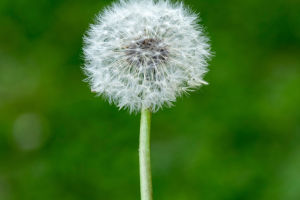Acacia dealbata, commonly known as the silver wattle or mimosa, is a strikingly beautiful plant native to Australia but has established itself in various regions, including Chile.
Renowned for its vibrant yellow flowers and distinctive foliage, Acacia dealbata is more than just an ornamental plant; it plays an essential role in the ecosystems where it grows.
This article explores the characteristics, ecological significance, and cultural importance of Acacia dealbata in Chile.
Acacia dealbata is a fast-growing evergreen tree that can reach heights of 10 to 25 meters (about 33 to 82 feet). Its most distinctive feature is its silvery-gray foliage, composed of finely divided leaflets that give the tree a soft, feathery appearance.
During the blooming season, typically from late winter to early spring, the tree is adorned with clusters of bright yellow, fragrant flowers, creating a stunning visual display.
The bark of Acacia dealbata is dark gray and furrowed, providing a textured contrast to its vibrant leaves and flowers. The tree produces seed pods that are flat and elongated, containing seeds that can remain viable for many years, contributing to its adaptability and resilience.
Acacia dealbata has a significant ecological role in the environments it inhabits. As a nitrogen-fixing plant, it enriches the soil by converting atmospheric nitrogen into a form that can be utilized by other plants.
This ability is particularly valuable in degraded or nutrient-poor soils, making Acacia dealbata a key player in restoration efforts.
Moreover, the tree provides habitat and food for various wildlife species. The flowers attract pollinators such as bees and butterflies, while the foliage offers shelter for birds and small mammals.
The seeds serve as a food source for various animals, contributing to the biodiversity of the region.
However, while Acacia dealbata can be beneficial in certain contexts, it can also become invasive in some areas, outcompeting native flora.
In Chile, careful management is required to balance its ecological contributions with potential negative impacts on local ecosystems.
In Chile, Acacia dealbata is appreciated not only for its aesthetic qualities but also for its cultural significance. The vibrant yellow flowers are often associated with celebrations and special occasions, adding a festive touch to gatherings and events.
The tree's beauty makes it a popular choice for landscaping in parks and gardens, where it provides shade and visual interest.
Acacia dealbata has also found its place in traditional medicine among indigenous communities.
Various parts of the tree, including the bark and leaves, have been used for their medicinal properties. The flowers are sometimes brewed into teas, believed to have soothing effects.
The wood of Acacia dealbata is valued for its durability and resistance to decay, making it suitable for furniture, crafts, and construction. This practical use further enhances the tree's importance within local economies.
Despite its many benefits, Acacia dealbata faces challenges related to habitat loss and climate change.
Deforestation and land conversion for agriculture threaten its natural habitats, while changing climate conditions may affect its growth patterns and distribution.
Conservation efforts are essential to ensure the sustainability of Acacia dealbata in Chile. Initiatives aimed at habitat restoration and the protection of natural ecosystems can help preserve this remarkable species.
Additionally, educating communities about the ecological value of Acacia dealbata fosters a deeper appreciation and encourages responsible management practices.
Acacia dealbata stands as a symbol of the beauty and ecological richness of Chilean landscapes. Its vibrant flowers and distinctive foliage not only enhance the natural scenery but also contribute to the ecological balance of the regions it inhabits.
By understanding and respecting this species, we can celebrate its contributions to biodiversity and cultural heritage while promoting conservation efforts to protect it for future generations.


